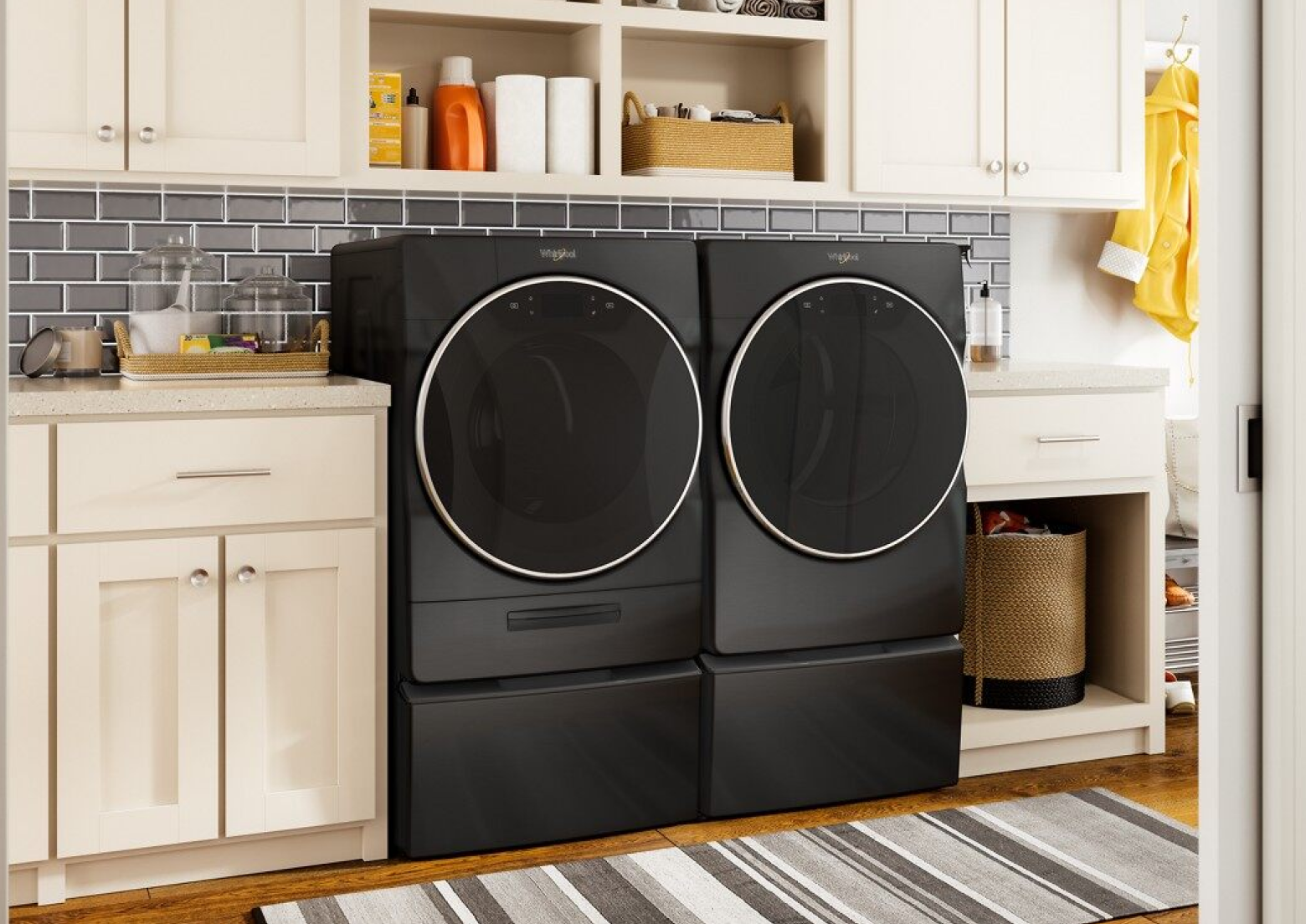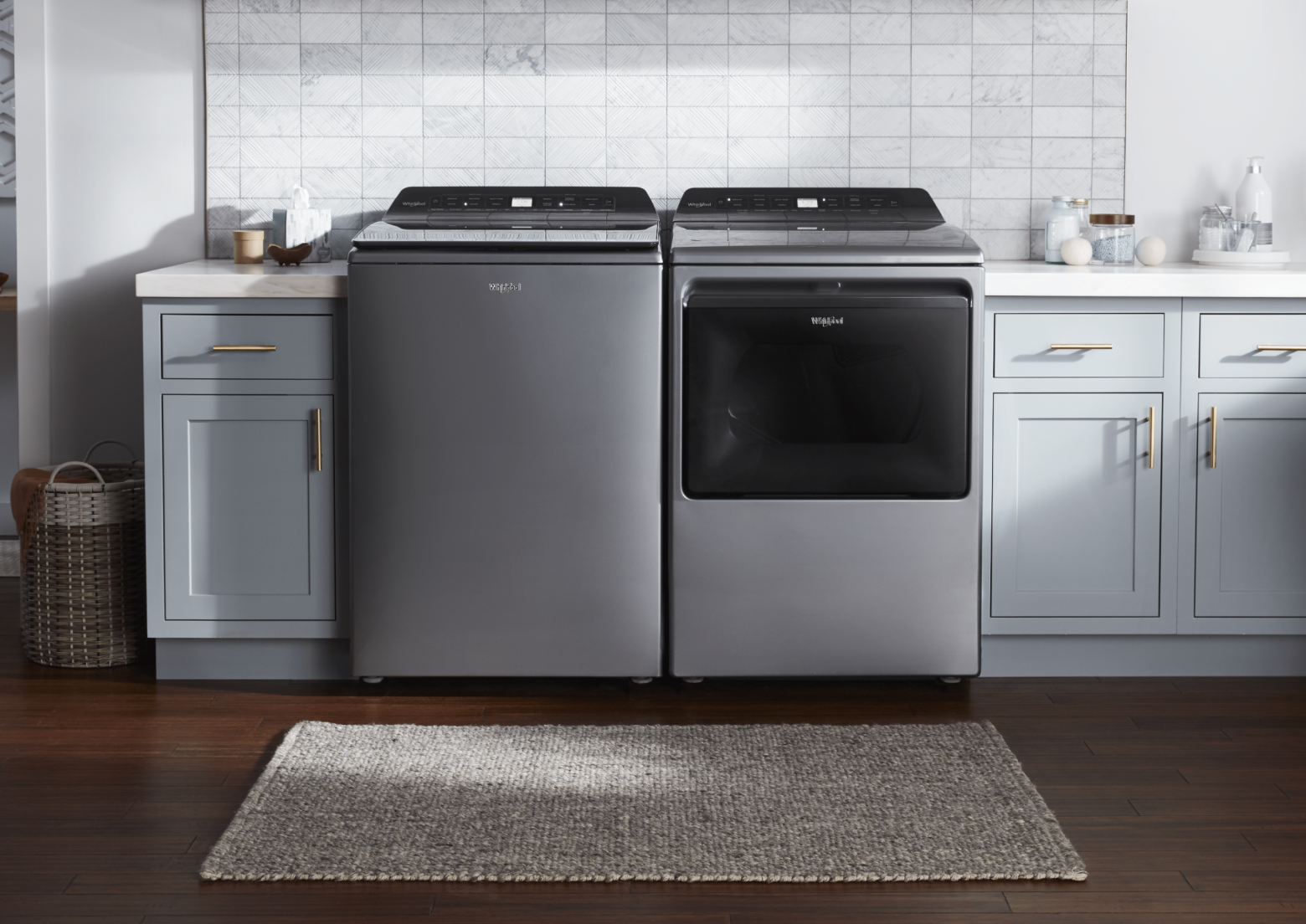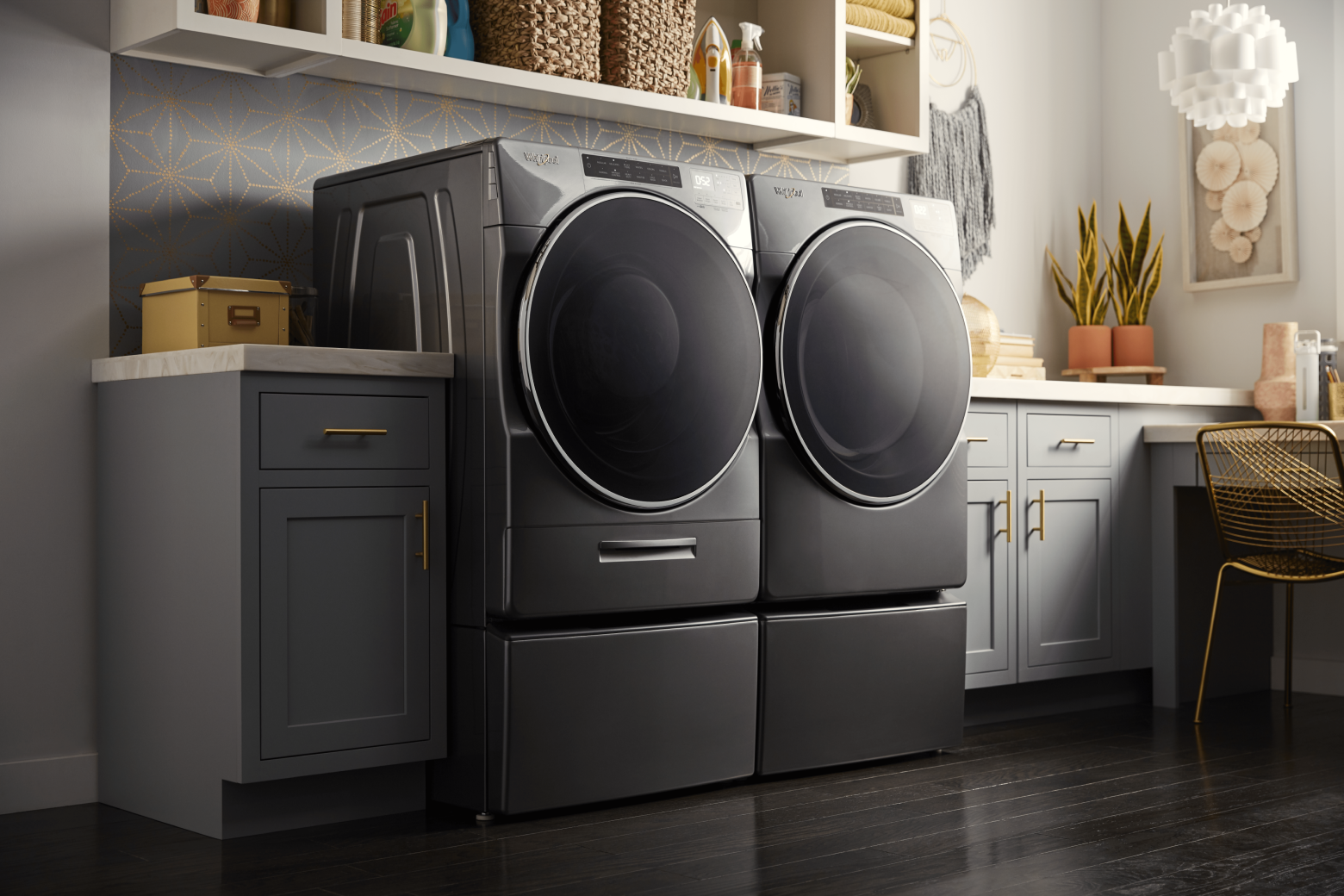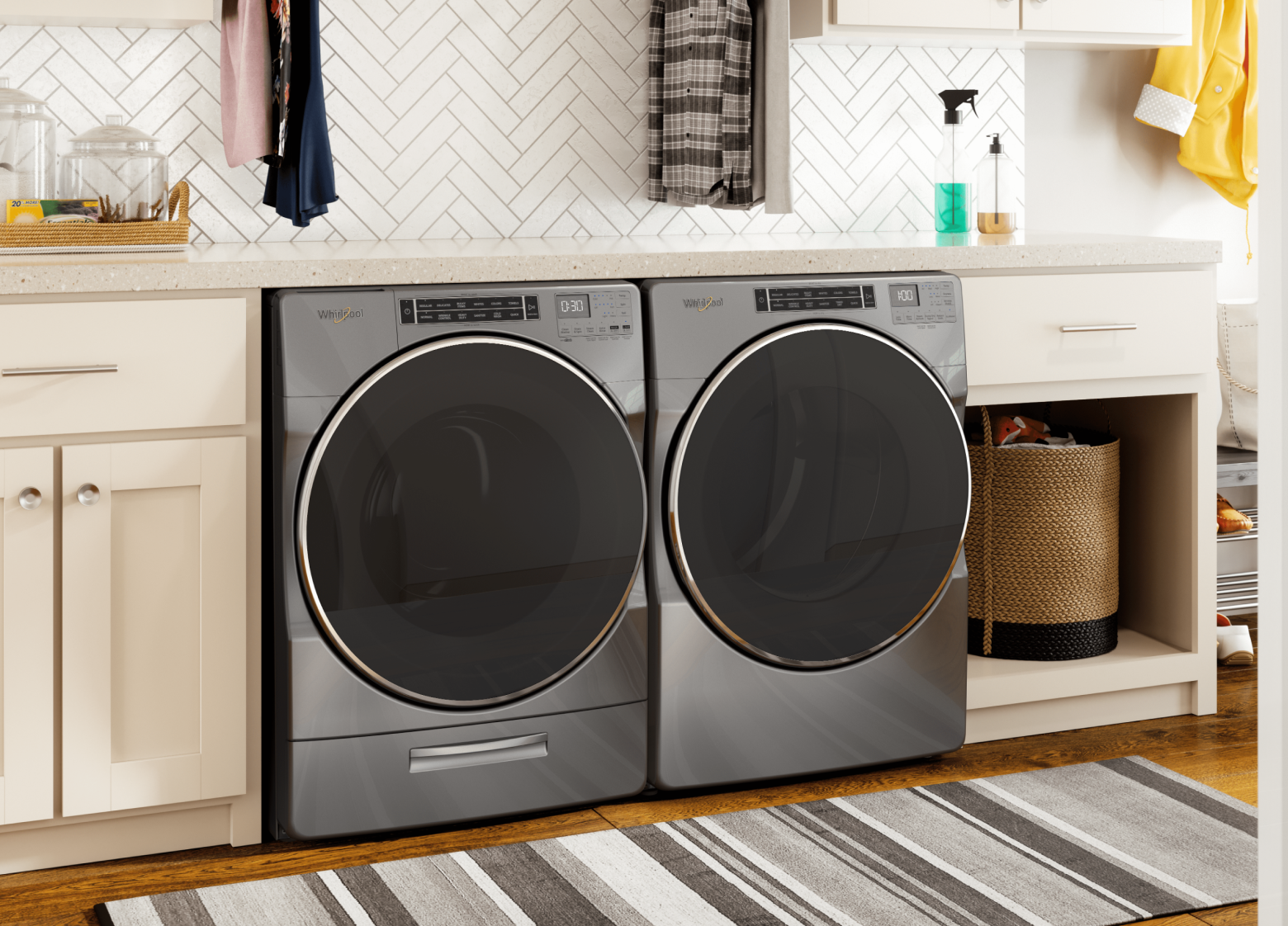
Types of dryers: A clothes dryer buying guide
Dryers, one half of the dynamic duo that makes your laundry tasks easier, ensure that you have freshly dried clothing after every load. If it’s time to replace your older model with a new dryer, this buying guide will break down the different types of dryers available so you can pick the one that’s best for you and your family.
What are the different types of clothes dryers?
While there numerous types of dryers, they can be narrowed down to the following:
Gas
Electric
Top-load matching
Front-load matching
Ventless
Stackable
All-in-one combination
Below, we’ll break down what differentiates these types of dryers and which one could work best for your needs


1. Gas dryers
All dryers use heated air and a tumbling motion in order to get your clothes dry. The difference comes with how the air within the drum is ultimately heated. Gas dryers, unlike electric dryers, rely on natural gas or propane to heat up the air to dry your clothes, and a regular house outlet to power the unit. These types of dryers tend to cost more upfront, but since they don’t require as much electricity, their running costs tend to be cheaper over time.
Note that you’ll need a gas hookup in order to install a gas dryer in your home, as well as a vent that can circulate the air to the outside, so they’re not ideal if you lack space, don’t have a gas hookup or a venting system. You should also become familiar with gas dryer BTU outputs before choosing your new dryer. Knowing how and when to clean your dryer vent can go a long way toward keeping it in shape. But if it’s time for a new dryer, Whirlpool has the right one for your family. Learn what to do if your dryer is squeaking.
Shop Whirlpool® Gas Dryers


2. Electric dryers
Electric dryers rely purely on electricity to heat and power up the machine. Their upfront costs can be cheaper than that of a gas dryer, but because they depend on electricity to run, their running costs may be more expensive than their gas counterparts. These dryers are fairly simple to install, though you will need a four-pronged, 240-volt electrical outlet and you may need venting as well.
Shop Whirlpool® Electric Dryers


3. Top-load matching dryers
While most dryers tend to load from the front, you can find dryers (like these available from Whirlpool) that aesthetically match top-loading washers for a more uniform and cohesive look in your laundry room. These types of dryers have their control panel toward the back of the machine like a top-loading washer would, and are usually placed side-by-side. Budget-friendly models can usually be found in this style.
Shop Whirlpool® Top-Load Matching Dryers


4. Front-load matching dryers
Conversely, if you have a front-loading washing machine, then you’ll most likely be looking for a dryer that matches this style. Front-loading dryers are typically stackable and almost always have a window on the door to match the corresponding washer, as well as the control panel on the front of the machine. These models usually have higher-end finishes and features, so they may have a higher price tag.
Shop Whirlpool® Front-Load Matching Dryers


5. Ventless dryers
For those that are tight on space or living in apartments that make having a vented dryer virtually impossible, ventless dryers are a great solution. As the name suggests, these dryers don’t require venting to the outside and come in two different options–condenser and heat pump styles.
Condenser-style dryers pull air from the exterior of the machine and pass it through a heating element that heats up the air and clothes. To remove the moisture, the condenser will cool the air and turn it into water, which the dryer will then either collect or pump out to drain before restarting the heating and cooling cycle again. The temperatures that these machines reach are typically lower than vented models, and may have longer drying times.
Heat pump dryers use a refrigerant system and hot and cold coils that will heat up the temperature within the drum. They tend to be more energy-efficient than electric dryers, only using about half of the energy of standard machines.
Shop Whirlpool® Ventless Dryers


6. Stacked and stackable dryers
For city dwellers with small apartments and those that have more of a laundry closet instead of a laundry room, stackable dryers can be a great solution to save you floor space. Dryers that are stackable have the option of being stacked with a stacking kit, but you can also place them side-by-side if later down the road you have more room. Stacked laundry centers, on the other hand, are usually two compartments—a washer and a dryer that are attached and cannot be separated or unstacked.
Shop Whirlpool® Stacked and Stackable Dryers


7. Steam dryers
Steam dryers are standard dryers that also have a steam drying option. While they can still dry using heat, these machines also have the capability of using hot, moist air that may help reduce wrinkles on clothing. You can also use them to refresh lightly used clothing without having to do an entire load of laundry, and you can find them in gas or electric models.
Shop Whirlpool® Steam Dryers


8. All-in-one combination washers and dryers
For the smallest and tightest of spaces, where even a stacked washer and dryer won’t do, all-in-one combination washers and dryers have the ability to wash and dry within the same drum. Their compact design makes them easy to install virtually anywhere and they don’t require any venting. Learn more about combined washer dryer options from Whirlpool.
Which type of dryer is best?
All dryers have their advantages, but the one that works best for you will ultimately depend on your family’s needs and the amount of space available in your home. You’ll want a larger capacity model if you have a large household that runs through laundry quickly, but if energy efficiency is something that’s particularly important to your family, then an energy-efficient model like a heat pump dryer may be just the perfect fit. Explore some of our best dryers to choose your next model.
Things to consider when buying a dryer
Prioritize what is most important to you when it comes time to do laundry. If you’re diligent about separating your loads and protecting your clothing’s fabric, then consider buying a dryer that has variations in cycles. You’ll also want to take special consideration on space and the kind of connection available. If you don’t have a direct gas line and don’t want to pay to install one, then you’ll want to purchase an electric dryer.
Also consider different features that may make your laundry routine even easier, like drying sensors, custom cycles, or even dryers that are smart-enabled and can connect to your wifi as well as your smartphone, like these appliances that you can find from Whirlpool.
.png?fit=constrain&fmt=jpg&wid=2875)
Get more with a Whirlpool account
Sign in for special savings
Was this article helpful? Pass it on
Learn more about Whirlpool® Laundry Appliances


home heartbeat
Ready for more tips, home hacks and appliance guides?

